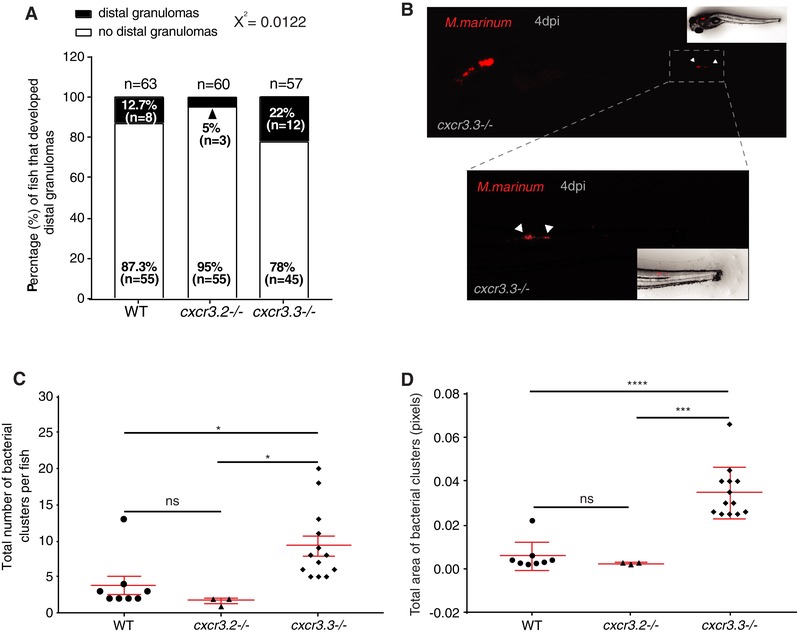Figure 8.

Enhanced motility of cxcr3.3 mutant macrophages facilitates bacterial dissemination. Four days after local infection with 200 CFU of Mm in the hb, cxcr3.3 mutants developed more distal granulomas (22%) than WT (12.7%) and cxcr3.2 mutants (5%), whereas the latter developed fewer than the other 2 groups (A). Embryos from the 3 genotypes were infected at 28 hpf and imaged under the stereo fluorescence microscope (whole body and zoom to the tail) at 4 dpi. Panel B illustrates the imaging process of a representative cxcr3.3 mutant larvae. Cxcr3.3‐depleted larvae developed more distal granulomas per fish (C) and these granulomas were also larger in cxcr3.3 mutants than the other 2 groups, whereas cxcr3.2 mutants showed an opposite trend (D). Graphs show pooled data from 4 independent replicates, each of 12–15 infected larvae per group. The number and size of distal granulomas were determined using the “analyze particle” function in Fiji. A χ 2 test was conducted to assess differences in the proportion of larvae that developed distal granulomas within the 3 groups and a one‐way ANOVA to compare the number and size of distal granulomas (ns P > 0.05, * P ≤ 0.05, *** P ≤ 0.001 and **** P ≤ 0.001). Data are shown as mean ± sem
